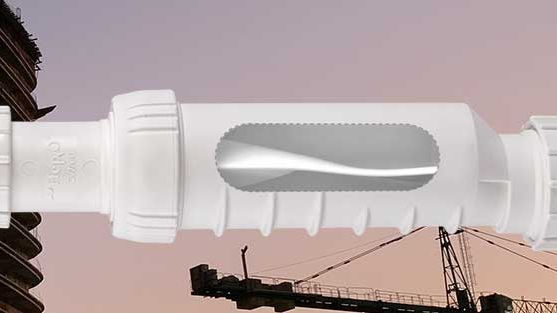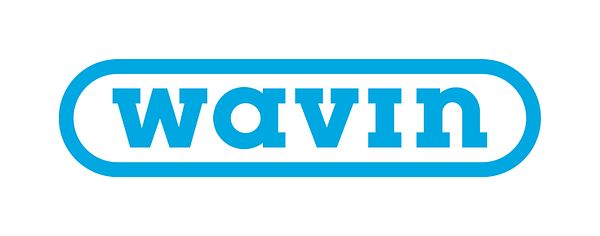
Press release -
Ignoring the lessons of history after SARS adds more risk of Covid-19 spread
On Thursday, 4 June, residents in a public housing complex Hong Kong were evacuated following a cluster of Covid-19 over several floors. In March 2003, a high-rise building complex, Amoy Gardens in Hong Kong, became one of the epicenters of a new Coronavirus. The complex ranged from 33 to 41 stories, with some 19,000 people. 329 occupants contracted the disease, 42 died. As part of the World Health Organisation (WHO) Investigation, wastewater plumbing systems were discovered to be a major cause of the rapid of the virus throughout the building.
Fast-forward to 2020 and SARS-CoV-2, commonly known as Covid-19, has proven to be even more deadly and is ravaging the world as we speak. Most people are now only too aware of some of the ways that a virus is spread. We know about the risks from airborne water droplets, direct contact, and contact with contaminated objects. We are constantly reminded of the precautions we all need to take to protect ourselves and others.
Now, we also must learn the lessons of history. If we know the risks of clusters of infections in high rise buildings, what measures do we need to take to ensure that does not happen again?

Risks from drainage systems
Drainage systems play a critical role in the spread of such viruses. Following the SARS epidemic, the WHO commissioned a study that concluded that dry U bends (p-traps) in bathroom drains in the Hong Kong building provided a conduit for contaminated foul air droplets to enter households. Simply put: the virus spreads through a faulty soil and waste piping system. When infected residents used their toilets, it enabled virus-laden droplets to move through the building via the waste system. Extractor fans in toilets then circulated the virus through rooms.
In 2017, a group of researchers, Drs Michael Gormley, Thomas Aspray, and David Kelley published a 20-year study into the transmission of virus infections within buildings.
In the medical publication, the Lancet, the research team highlighted an area of Covid-19 risk that is yet to receive any attention is big buildings such as hospitals and tower blocks, referring back to the SARS outbreak in Hong Kong. While the team acknowledges that direct person-to-person transmission is still the most common way of acquiring the illness, their research suggests that occupants in tall buildings could become infected if defects occur in the plumbing system. Commenting on the article, David Clayson, a wastewater expert from a Dutch company, Wavin says "It’s important for people to be aware of this and take steps to keep themselves safe.”
Safe water supply, adequate sanitation services, and better hygiene practices today are recognized by the WHO as vital instruments to prevent the spread of Covid-19. However, many thousands of buildings all over the world deal still with the very same defects as the Hong Kong building. The drainage systems in these buildings can literally make people sick.
What price for healthy environments? A vital message for those involved in building management
During lockdowns, such as are currently taking place around the world, Mr. Clayson reminds people that “the U-bends in the plumbing in large buildings are particularly vulnerable to water seals being blown out from the added pressure of more people using these systems at the same time than usual—or, in the case of hospitals, from wards being at overcapacity. The same risks, incidentally, can come from the water in U-bends evaporating because of plumbing being underused—even in a lockdown there will be old sinks or bathroom floor drains in flats that don’t get used.”
He continued “We see a number of very easy measures that people can take to avoid getting ill by the spread of contaminated sewage droplets. Our most important advice: sewage odor is always unhealthy. If you smell sewer gas, something is wrong and should be fixed. Often sewage odor is caused by a dried-up P-trap (or U-bend). P-traps are perfectly usable for most situations but have their limitations when they lose their water-seal. This is especially a risk when they are placed in high rise buildings or used infrequently. A warm environment can speed up the loss of water from the trap, as can flushing of toilets elsewhere in the building, or if the building has poor or compromised venting.”
The solution is obvious, simple, and cost-effective. In these specific cases approved and certified Sanitary Waste Valves should be installed instead of P-traps. Waste Valve systems are safer and more reliable than their u-bended counterparts as they do not rely on a water seal to maintain protection against sewer gas ingress. However, being more expensive waterless systems are still not as widely used as they should be. This needs to change. What price should society place on health protection?

Mr Clayson concluded “As a global manufacturer of critical water supply and sanitation infrastructure we feel it is our responsibility to advance the use of these vital instruments that help contain Covid-19 and other viruses. That is why we will make available HepVo Waste Valves to key projects in selected markets where they can make a critical difference. With minor measures, we can create a major improvement in the prevention of diseases. We see this as a core commitment to Wavin.”
Download HepVo product leaflet.
Sources:
CNN - SARS 10 years on: How dogged detective work defeated an epidemic
Hong Kong Department of Health (2003) - Outbreak of SARS at Amoy Gardens
The Lancet - COVID-19: mitigating transmission via wastewater plumbing systems
Topics
Categories
Wavin is an innovative solution provider for the building and infrastructure industry across multiple continents. Backed up by 60+ years of expertise, we are geared up to tackle some of the world’s biggest challenges around: water supply, sanitation, climate-resilient cities and building performance.
At Wavin, we focus on creating positive change in the world and our passion is building livable and loveable places. We engage and collaborate with city leaders, engineers, planners and installers to help make cities future-proof and buildings comfortable and energy-efficient.
Wavin is part of Orbia, a community of companies bound together by a shared purpose: to advance life around the world. Wavin has 12’000+ employees in 40+ countries worldwide and operates under brands like Wavin, Amanco and Pavco.

